A Star System of My Own, Part 3
Continued from
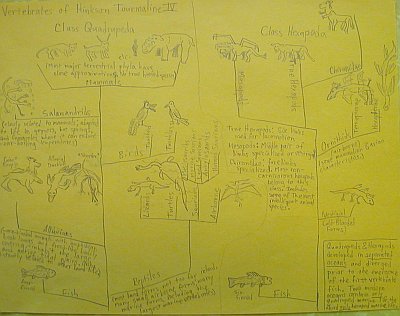
The vertebrate life forms native to Hinkson Tourmaline IV are divided into two broad categories, four-limbed and six-limbed. Quadrupeds and hexapods developed in separated oceans and diverged prior to the emergence of the first vertebrate fish. Two modern oceans contain only quadruped marine life and four-finned fish; the third ocean contains only hexapod marine life and six-finned fish.

Most major terrestrial phyla have close approximations among the quadruped mammals of Hinkson Tourmaline IV. Note, there are no true hoofed species.
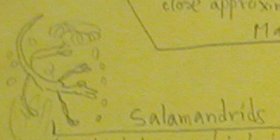
Salamandrid species are closely related to the mammals. They are adapted to life in geysers, hot springs, and fumaroles, where they can endure near boiling temperatures.
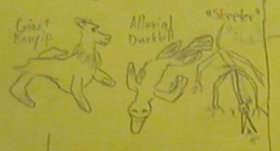
Alluvians are warm-blooded animals with amphibian book lungs and a frond-like bodily covering. A wide variety of alluvian species, such as the giant bunyip, the alluvial duckbill, and the skeeter, inhabit the large and active coastal tidal plains around the oceans and other bodies of water. Tides of up to 100 feet not being unusual, these tidal plains are often several miles wide. Alluvians are only distantly related to other land life.
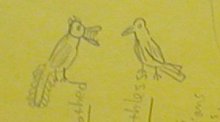
The birds of Hinkson Tourmaline IV are divided into toothed birds and toothless birds.
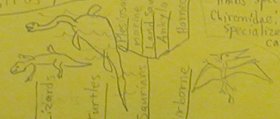
The quadruped reptiles include land-based lizards and turtles. They also include airborne lizard species, and a wide variety of saurians, including pleseiosaurids and other marine saurians, land saurians, ankylosaurids, and horned saurians.

The hexapod mammals of Hinkson Tourmaline IV are generally more specialized than the quadrupeds. The hexapods tend to occupy narrower ecological niches, but they usually predominate strongly in those niches.
Hexapod mammals include various mesopod species, where the middle pair of limbs is either for specialized use or else vestigial. They also include a variety of true hexapods, where all six limbs are used for locomotion. And they include various species of chironidae, where the forelimbs are specialized; most non-carnivorous hexapods belong to this class, which also includes some of the most intelligent animal species.
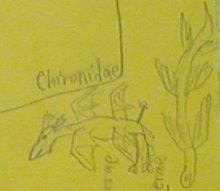
The ornithids include a variety of airborne hexapod species, with some mammalian and some avian characteristics. The ornithids are divided into hexapterae, with all six limbs more or less winglike; and tetrapterae, with four limbs winglike and the rear two limbs specialized or footlike.
There are also marine hexapods, including some large saurians and some hexapod porpoiselike species; as well as a few vestigial land-based cold-blooded hexapod life forms.
Tomorrow: The calendar of Hinkson Tourmaline IV.
Labels: worlds








0 Comments:
Post a Comment
<< Home